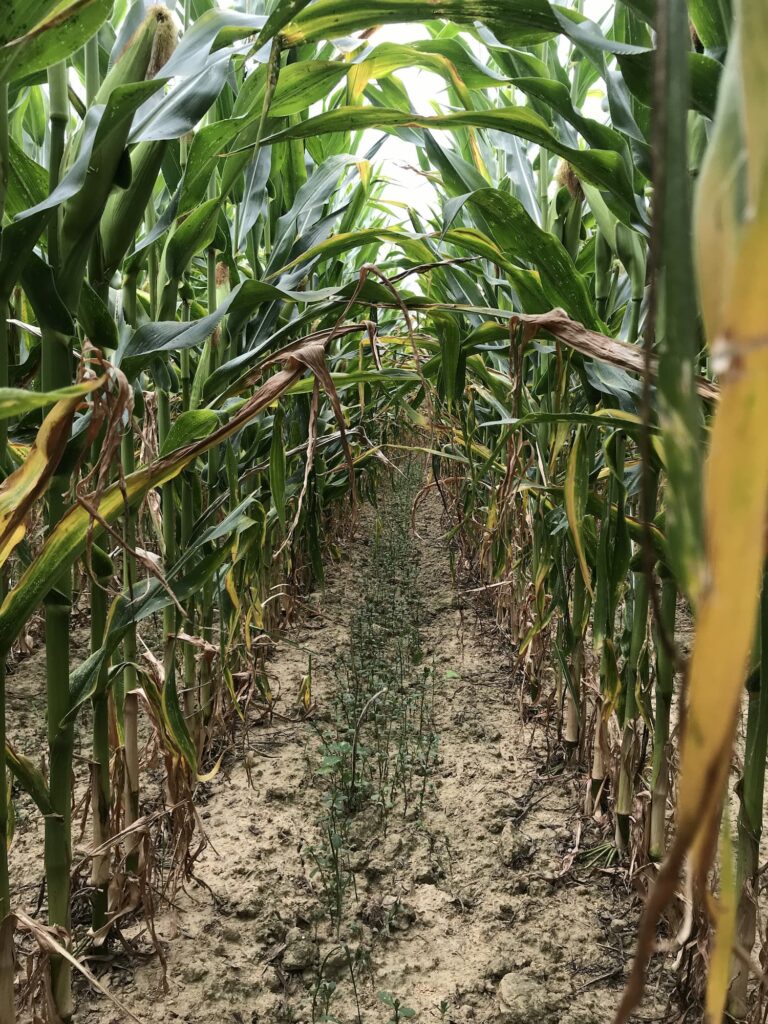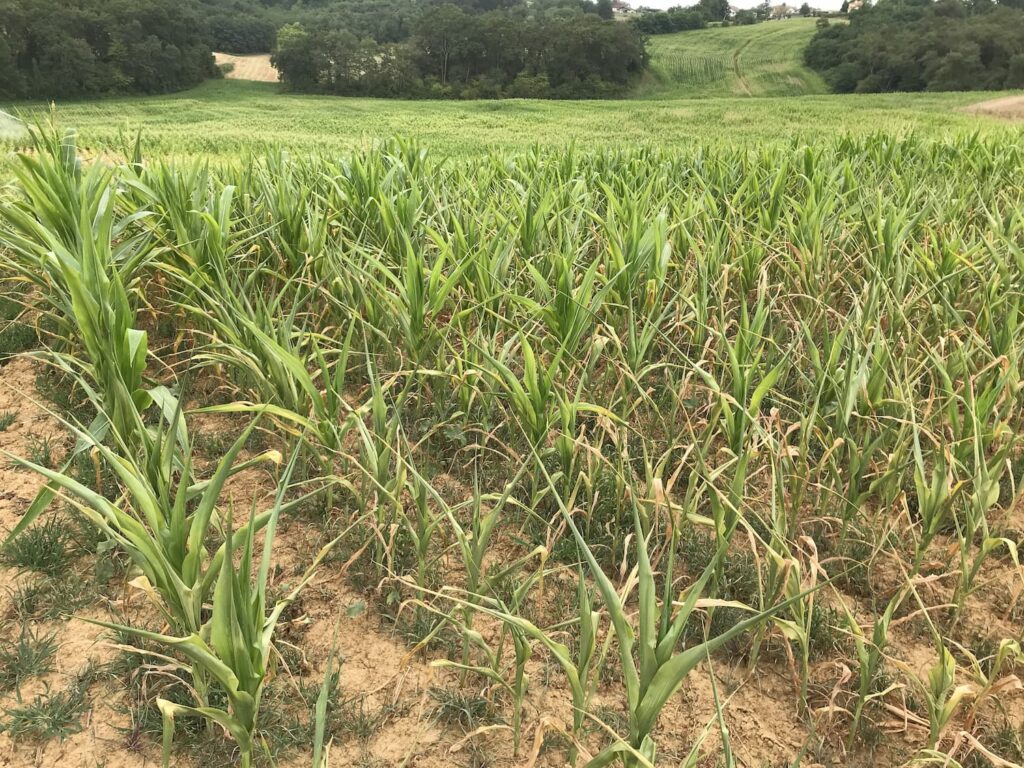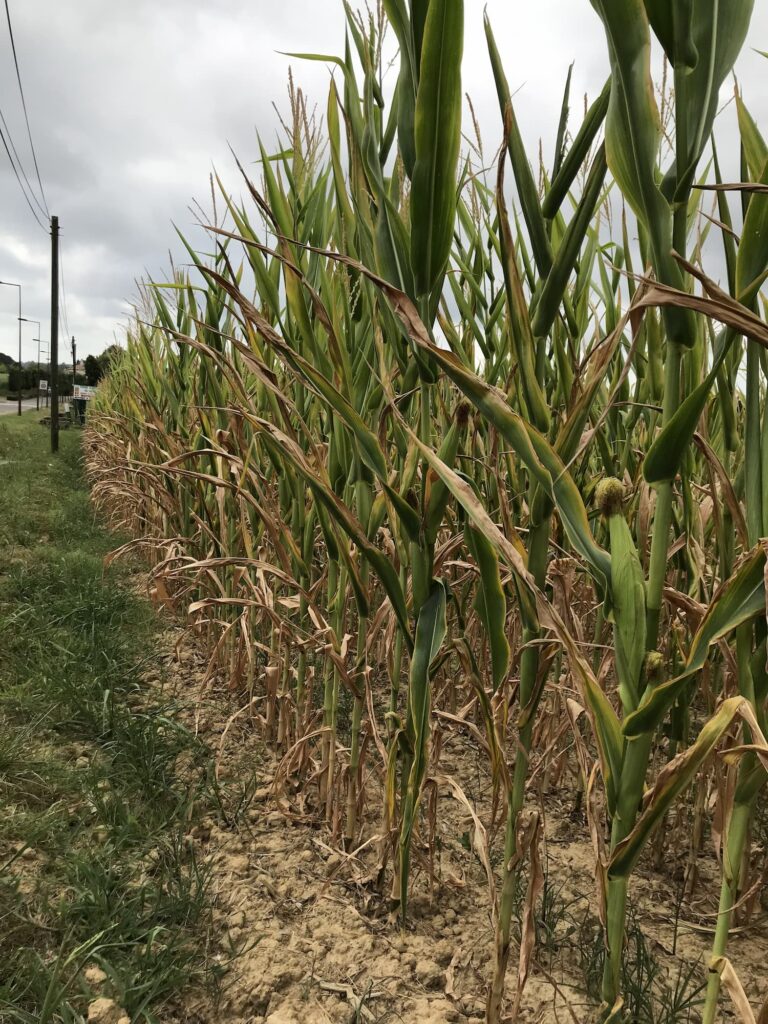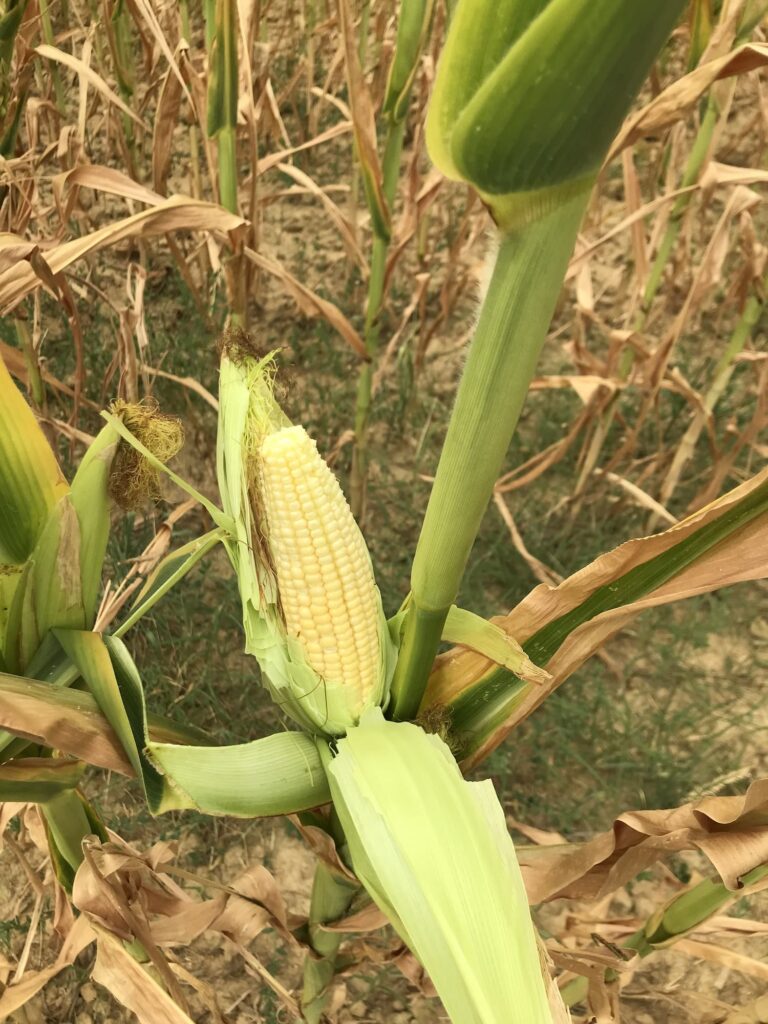ROLL-UP LEAVES, GRAY-LOOKING CROPS OR COMPLETELY DRY PLANTS...
Rolled leaves, crops with a grayish appearance or completely dry plants… Corn has been hit hard by the heat wave that has hit France in recent days. In the fields, it was like being in an oven. Farmers face extremely high temperatures but also a dwindling water supply. For the second time this year, after the episode of June, the mercury rose in the Southwest above 40°. Far from the optimal conditions for growing corn, which are between 20 and 30°C. How can corn withstand such high heat for several days ? The corn “leeks”, the leaves tense and roll up. The plant tries to consume as little water as possible. The stomata which are used to exchange with the outside close to prevent evapo-transpiration.

This is how the plant defends itself, but then it reduces photosynthesis. This rather spectacular protection only works for a certain time.
HEAT + DROUGHT


Because the period we are living in is the conjunction of an early heat wave, high temperatures and a phenomenon that lasts. Usually we see such conditions after the second half of August or early September. After having suffered an already very dry spring and sometimes hail, the farmers of Maïsadour would have done well without this new heat wave. Especially since the state of the water reserve is very low. It hasn’t rained since mid-June. When rain fails, irrigation makes all the difference. Non-irrigated maize – this is the case for a large number of farms in the Maïsadour production area – is suffering from the prolonged drought. As the soil is dry, the plant can no longer draw water from it and its survival is at stake. Concern is growing among our farmers who have in mind the calamitous year 2003 for the harvests.
CONCERNS FOR NON-IRRIGUATED CORN

The heat wave is added to the drought, and for the corn plants the heat stress to the water stress. This can have the effect of burning the silks and decreasing the production of pollen and thus decreasing the production of grains. Flowering time is critical for corn. The situation varies according to farms and soil quality. The damage observed on the most affected plots is irreversible, even if the weather were to be more favorable in August. It is still too early to draw an assessment of the heatwave episode according to the sowing dates and the stage at which the exceptionally hot temperatures intervened.
If the heat wave and the drought last, there is a big danger for the non-irrigated maize and subsequently for the harvest. It is in the next two or three weeks that the corn will need the most water. However, the fortnightly weather reports predict very little precipitation. Every day that passes without rain endangers crops.
